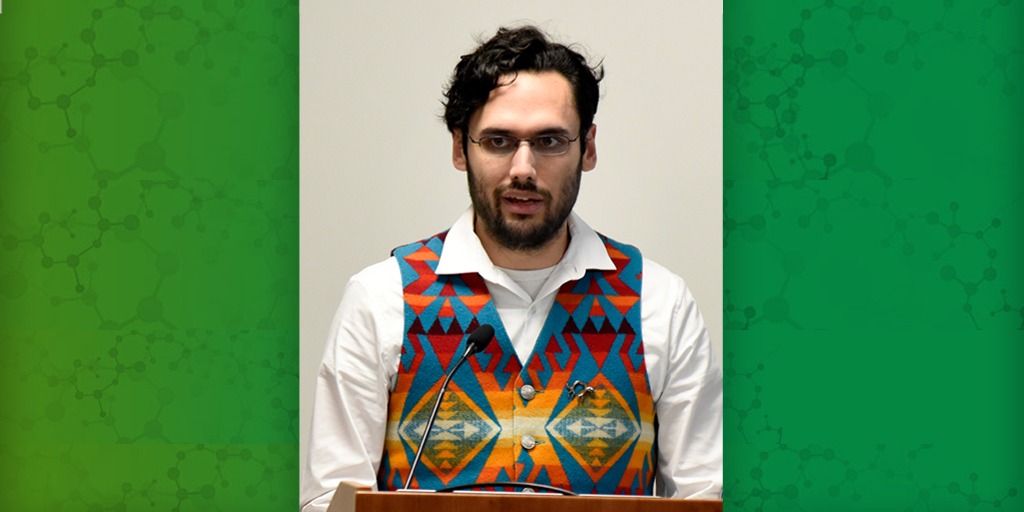Trey Saddler, a data scientist in the National Toxicology Program (NTP), spoke at NIEHS Dec. 12 about the environmental health problems faced by American Indians.
His talk was sponsored by the NIEHS Office of Science Education and Diversity as part of the Diversity Speaker Series.
A member of the Chippewa Cree Tribe, Saddler also is a descendant of the Confederated Salish and Kootenai Tribes. He earned a bachelor’s degree in life sciences with a focus on environmental health at Salish Kootenai College, a tribal college in Pablo, Montana.
“There are a lot of issues [affecting tribes],” said Saddler, who works in the NTP Office of Data Science.
Water quality — or lack thereof
As an undergraduate student, Saddler worked on a community-based research (CBR) project related to the Mi’kmaq peoples in Maine. He measured their arsenic and mercury exposure from eating fish.
The results were mixed, but Saddler said he learned the value of cooperating with tribes when conducting research. “There’s been a lot of mismanagement of data in the past,” he added. “CBR creates trust by putting control of the data in the hands of the tribes.”
Saddler, who studied tribal fisheries as an Environmental Protection Agency intern, pointed to another concern. “Many tribes fear that recent efforts to weaken water quality standards will affect the declining fish population,” he said. “Salmon are a primary source of protein on reservations.”
 “Trey is a polymath. He’s a meticulous data scientist and a good colleague,” said Auerbach. (Photo courtesy of Steve McCaw)
“Trey is a polymath. He’s a meticulous data scientist and a good colleague,” said Auerbach. (Photo courtesy of Steve McCaw)In Arizona, near the Navajo reservation, tribal members’ water quality concerns involve uranium contamination, noted Saddler.
He highlighted work by Tommy Rock, Ph.D., who in 2015 tested public water around Sanders, a community that is about 80% Navajo, through an NIEHS Partnerships for Environmental Public Health grant. Rock found elevated uranium levels near the Puerco River and in well water, which led to public policy changes and cleaner water.
Air pollution
For Saddler, poor air quality is of particular concern, especially in places such as Farmington, New Mexico, where he grew up. The city is near the Navajo reservation.
There and in other areas, he said, a dual threat to health exists — coal-fired power plant emissions combined with household exposure to particulate matter and carbon monoxide. The indoor pollution often comes from old wood-fired stoves.
“The stoves are not well-sealed, and with poor ventilation in tribal housing, a lot of health issues arise,” Saddler explained. He said the National Tribal Air Association and the National Tribal Forum on Air Quality are working to monitor air quality on and near reservations.
 “I would like to get a master’s degree in data science,” said Saddler, shown here with an early photo of himself. (Photo courtesy of Steve McCaw)
“I would like to get a master’s degree in data science,” said Saddler, shown here with an early photo of himself. (Photo courtesy of Steve McCaw)Another problem in such communities is lack of technological infrastructure, Saddler told the audience. He said that computers and high-speed internet access are crucial to creating jobs and improving life on remote reservations.
Saddler added that gifted tribal students often face a choice of staying on the reservation in low-paying jobs or leaving for better opportunities. “Broadband access has always been the big stumbling block,” he said.
(John Yewell is a contract writer for the NIEHS Office of Communications and Public Liaison.)
Source link
factor.niehs.nih.gov

